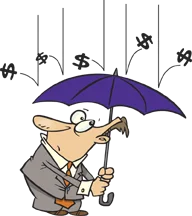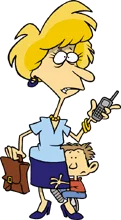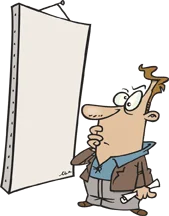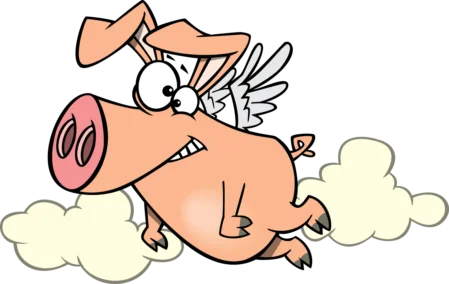Debits Credits Fully Expanded Equation
Debits Credits

Debits and Credits
Fully Expanded Version
of The Accounting Equation
In a prior lesson, we discussed, developed, and explained the Fully Expanded Accounting Equation. I also said that we would be revisiting this topic in another lesson. Well, I'm a man of my word.
If you recall, since
(1) Property = Assets and
(2) Property Rights (Claims to the Property) = Liabilities + Equity,
the simple or abbreviated accounting equation
Property = Property Rights
expanded or restated became
Assets = Liabilities + Owner's Equity.

We also concentrated on the Owner’s Equity (Capital) portion of the equation and discussed how the balance of Owner’s Equity (“Ma Capital”) is affected by her “kids” Revenue, Expense, Investments, and Draws.
Let’s review these effects one more time:
Owner Investments (Kid Investment) increase Owner’s Equity
Revenues (Kid Revenue) increase Owner’s Equity
Expenses (Kid Expense) decrease Owner’s Equity
Owner’s Draws (Kid Draws) decrease Owner’s Equity
Using the above information we arrived at the following equation:
Current Owner’s Equity = Beginning Owner’s Equity + Owner’s Investments + Revenues – Expenses -Draws
Our new owner’s equity equation illustrated the relationships and effects investments, revenue, expense, and draws have on Owner’s Equity .
Taking this one step further, we arrived at our Fully Expanded Accounting Equation which included all the components that make up and affect Owner’s Equity.
Our Expanded Accounting Equation
Assets = Liabilities + Owner’s Equity
expanded or restated became our
Fully Expanded Accounting Equation
Assets = Liabilities + Beginning Owner’s Equity + Additional Owner Investments + Revenues – Expenses – Draws.
In the Expanded Version of the Accounting Equation, “Ma Capital’s Kids” are hiding behind her skirt. They’re there; you just don’t see them. The fully expanded version unhides them and shows you their affects on Owner’s Equity (“Ma Capital”).
| Effects Of Debits and Credits | |||||
| Assets | Liabilities | Beg Equity | Revenue | Expense | Draws |
| Normal Balance Debit | Normal Balance Credit | Normal Balance Credit | Normal Balance Credit | Normal Balance Debit | Normal Balance Debit |
| Debit Increase | Credit Increase | Credit Increase | Credit Increase | Debit Increase | Debit Increase |
| Credit Decrease | Debit Decrease | Debit Decrease | Debit Decrease | Credit Decrease | Credit Decrease |
We'll use the following table as an aid to see how all the pieces of the game called bookkeeping fit together.

| Normal Debit Balances | Normal Credit Balances | Normal Debit and Credit Balances | Profit or Loss |
| Assets = | Liabilities + | Beginning Owner's Equity (Normal Credit Balance) | |
+ Additional Owner Investments (Normal Credit Balance) | |||
+ Revenue (Normal Credit Balance) | + Revenue | ||
- Expenses (Normal Debit Balance) | - Expenses | ||
=Profit or Loss | |||
- Draws (Normal Debit Balance) | |||
= Ending Owner's Equity (Normal Credit Balance) | |||

Just from looking at the above tables and not even knowing anything about bookkeeping, what should you be able to tell me ?
1. Assets = Liabilities + Ending Owner’s Equity
2. Revenues – Expenses = Profit or Loss
3. Beginning Owner’s Equity + Owner’s Contributions + Revenue – Expense – Draws = Ending Owner’s Equity
4. Asset Accounts normally have Debit Balances and are increased with a debit and decreased with a credit.
5. Liability Accounts normally have Credit Balances and are increased with a credit and decreased with a debit.
6. Owner’s Equity ( Capital ) Account normally has a Credit Balance and is increased with a credit and decreased with a debit.
7. Two of Ma’s Equity Kids, Expense and Draws, normally have a Debit Balance and are increased with a debit and decreased with a credit.
8. Two of Ma’s Equity Kids, Revenue and Investments normally have a Credit Balance and are increased with a credit and decreased with a debit.
9. Revenues increase Owner’s Equity ( Capital ) because they’re added to Owner’s Equity.
10. Expenses decrease Owner’s Equity ( Capital ) because they’re subtracted from Owner’s Equity.
11. Draws decrease Owner’s Equity ( Capital ) because they’re subtracted from Owner’s Equity.
Besides the Owner’s Original Investment in his/her business, at times, the owner may have to contribute or invest additional assets which increase Owner’s Equity.
Note: Additional owner investments are normally added directly (credited) to the Owner’s Capital Account Balance.
Owner Draws are not used to figure the profit or loss of the business.
Note: The owner’s draws could be equal, less than, or more than the profit / loss of the business.
12. Additional Owner Contributions, Revenues, Expenses, and Draws eventually are all merged together and become a part of the Ending Owner’s Equity Balance. If you’ve heard the phrase Closing The Books , believe it or not, this is all that’s basically involved in Closing The Books.
Comment: Before we end our discussion of equations, another equation that you may run across is what I call the Debit and Credit Equation . The Debit and Credit Equation is just a variation (rearranged version) of the Fully Expanded Accounting Equation. Some simple Algebra was used to rearrange the major types of accounts.
So you know it looks like this:
Debit and Credit Equation
Assets + Draws + Expenses = Liabilities + Owner’s Equity + Revenue
Normal Debit Balances = Normal Credit Balances
Debit Balance Accounts = Credit Balance Accounts
In this equation all the normal debit balance accounts are on the left side of the equal sign and all the normal credit balance accounts are on the right side of the equal side. This equation is sometimes used to help understand Debits and Credits which we’ll be discussing in our next lesson.
Sometimes a picture is worth a thousand words.
Debit and Credit Equation | |||||
Left Side | = Right Side | ||||
| Assets + | Draws + | Expenses | = Liabilities + | Owner's Equity + | Revenue |
| Normal Debit Balances | = Normal Credit Balances | ||||
| Debit Balance Accounts | = Credit Balance Accounts | ||||

Next, let's find out when to Debit and Credit and yes you'll understand before Pigs Fly.
